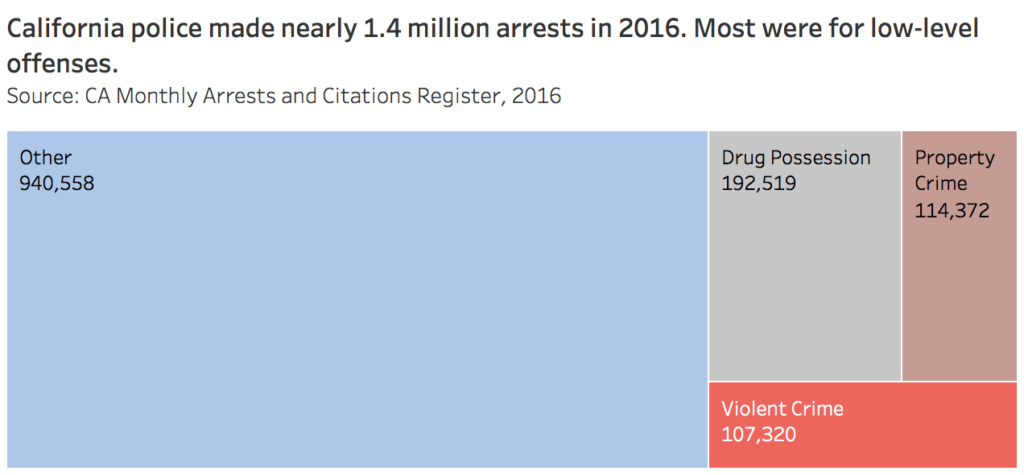Every person in prison is a policy failure,” is a common phrase in abolitionist circles. But of course it’s not just policy that is failing people; it’s also police departments. A new project called the Police Scorecard has found Californian urban police departments to be particularly bad at acting fairly and keeping people safe.
Launched on May 30, the ongoing study from Campaign Zero—a “data-informed platform” tracking police violence and criminal justice reform across the country—”grades” the police agencies of California’s 100 biggest cities according to police violence, accountability and policies. The scores were rendered by calculating percentiles from data on use of force, unarmed civilian killings and racially-biased arrest rates.
The findings are troubling: Most departments received a score lower than 60 percent—in other words, an F.
What does this mean on the ground? Half of people killed or seriously injured by police (49 percent) were unarmed. Across the state, Black people were arrested for misdemeanors at more than twice the per capita rate of white people. And police officers are three times likelier to shoot a Black person than a white one.
This plays out at the local level. For example, the LAPD received 951 allegations of police discrimination from 2016-2017. It upheld ZERO of these allegations. And if you report excessive force, the LAPD has a 99% chance of the allegation not leading to accountability. pic.twitter.com/FGJbICg3aL
— Samuel Sinyangwe (@samswey) May 30, 2019
The team’s methodology serves as a critical reminder. The scorers used drug possession arrests to capture the scale of racial bias, highlighting how devastating the War on Drugs has been for communities of color. “Drug possession is a classic example,” of how Black and Latinx people are disproportionately targeted by police, even when racial and ethnic groups use illicit drugs at similar rates, described data scientist Sam Sinyangwe, an activist who developed the Scorecard.
“We wanted to create an indicator that shows how departments are overpolicing and arresting for things white people are doing,” Sinyangwe told Filter.
Drug possession arrests are not just driving mass incarceration; they also form the basis for police interactions that could turn deadly. “We also wanted to address that the arrest or the police contact is the first part of the equations, and the use of the deadly force is another part of the racial bias,” said Sinyangwe. “To calculate racial bias in each police department, we combined the racial disparities within drug possession arrests and racial disparities within the use of deadly force.”
The vast majority of California’s 100 largest city police agencies—89, to be exact—arrested Black people for drug possession at higher rates than whites. And police made almost double the number of drug possession arrests than they did for all violent crimes combined.
Source: Police Scorecard
While racial targeting is pervasive across California, Sinyangwe emphasized that activist work needs to attend specifically to each police agency if real transformation is to be achieved. “Not all the departments have the same problems. That’s the point of the score card: to help communities wrestle with problems that are most acute.”
“I think about Oakland,” Sinyangwe continued. “Use of force complaints have decreased, but there still exists extreme racially-disparate arrests. That involves going beyond use of force. That goes to police department’s priorities. The data can help communities make those changes.”
Photograph of two Los Angeles Police Department officers walking to a patrol car in Mission Hills, by Chris Yarzab via Wikimedia Commons






Show Comments